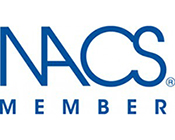Garmin GPS Glossary
2D Operating Mode - A two-dimensional GPS position fix that includes only horizontal coordinates (no GPS elevation). It requires a minimum of three visible satellites.
3D Operating Mode - A three-dimensional GPS position fix that includes horizontal coordinates, plus elevation. It requires a minimum of four visible satellites.
Accuracy - A measure of how close an estimate of a GPS position is to the true location.
Acquisition Time - The time it takes a GPS receiver to acquire satellite signals and determine the initial position.
Active Antenna - An antenna that amplifies the GPS signal before sending it to the receiver.
Active Leg - The segment of a route currently being traveled. A "segment" is that portion of a route between any two waypoints in the route.
Almanac Data - Information transmitted by each satellite on the orbits and state (health) of every satellite in the GPS constellation. Almanac data allows the GPS receiver to rapidly acquire satellites shortly after it is turned on.
Altimeter - An instrument for determining elevation, especially an aneroid barometer used in aircraft that senses pressure changes accompanying changes in altitude. The Garmin® eTrex® Vista and Summit models contain a basic GPS with a built-in barometric altimeter.
Analog Signal - The principal feature of analog signals is that they are continuous. In contrast, digital signals consist of values measured at discrete intervals.
Anti-Spoofing - Encryption of the P-code to protect the P-signals from being "spoofed" through the transmission of false GPS signals by an adversary.
Atomic Clock - A very precise clock that operates using the elements cesium or rubidium. A cesium clock has an error of one second per million years. GPS satellites contain multiple cesium and rubidium clocks.
AutoLocate® - This is a proprietary feature of Garmin GPS receivers. A Garmin unit displays the "AutoLocate" status when it is looking for and collecting data from satellites that were visible at its last known or initialized position (almanac data), but it has not collected enough data to calculate a position fix.
Azimuth - The horizontal direction from one point on the earth to another, measured clockwise in degrees (0-360) from a north or south reference line. An azimuth is also called a bearing.
Basemap - Garmin mapping units come with permanently built-in basemaps, which typically include coverage of oceans, rivers, and lakes; principal cities, smaller cities, and towns; interstates, highways, and local thoroughfares; and railroads, airports, and political boundaries. Basemaps are available in a variety of global coverage areas, depending on the user’s needs.
Beacon - Stationary transmitter that emits signals in all directions (also called a non-directional beacon). In DGPS, the beacon transmitter also broadcasts pseudorange correction data to nearby GPS receivers for greater accuracy.
Bearing - The compass direction from a position to a destination, measured to the nearest degree (also call an azimuth). In a GPS receiver, bearing usually refers to the direction to a waypoint.
C/A Code - See Coarse/Acquisition Code.
Carrier Frequency - The frequency of an unmodulated output of a radio transmitter. The GPS L1 carrier frequency is 1575.42 MHz.
Cartography - The art or technique of making maps or charts. Many GPS receivers have detailed mapping—orcartography—capabilities.
CDI - See Course Deviation Indicator
CDMA - See Code Division Multiple Access.
Code Division Multiple Access (CDMA) - A method whereby many radios use the same frequency, but each one has a unique code. GPS uses CDMA techniques with codes for their unique cross-correlation properties.
Clock Bias - The difference between the indicated clock time in the GPS receiver and true universal time (or GPS satellite time).
Clock Offset - A constant difference in the time reading between two clocks, normally used to indicate a difference between two time zones.
CMG - See Course Made Good.
Coarse/Acquisition Code (C/A Code) - The standard positioning signal the GPS satellite transmits to the civilian user. It contains the information the GPS receiver uses to fix its position and time, and is accurate to 100 meters or better.
COG - See Course Over Ground.
Cold Start - The power-on sequence where the GPS receiver downloads almanac data before establishing a position fix.
Control Segment - A worldwide chain of monitoring and control stations that control and manage the GPS satellite constellation.
Coordinates - A set of numbers that describes your location on or above the earth. Coordinates are typically based on latitude/longitude lines of reference or a global/regional grid projection (e.g., UTM, MGRS, Maidenhead).
Coordinated Universal Time (UTC) - Replaced Greenwich Mean Time (GMT) as the world standard for time in 1986. UTC uses atomic clock measurements to add or omit leap seconds each year to compensate for changes in the rotation of the earth.
Course - The direction from the beginning landmark of a course to its destination (measured in degrees, radians, or mils), or the direction from a route waypoint to the next waypoint in the route segment.
Course Deviation Indicator (CDI) - A technique for displaying the amount and direction of crosstrack error (XTE).
Course Made Good (CMG) - The bearing from the 'active from' position (your starting point) to your present position.
Course Over Ground (COG) - Your direction of movement relative to a ground position.
Course To Steer - The heading you need to maintain in order to reach a destination.
Course Up Orientation - Fixes the GPS receiver's map display so the direction of navigation is always "up."
Crosstrack Error (XTE/XTK) - The distance you are off the desired course in either direction.
Datum - A math model which depicts a part of the surface of the earth. Latitude and longitude lines on a paper map are referenced to a specific map datum. The map datum selected on a GPS receiver needs to match the datum listed on the corresponding paper map in order for position readings to match.
DCG® - See Depth Controlled Gain.
Depth Controlled Gain (DCG) - A Garmin proprietary technology that automatically adjusts fishfinder sensitivity according to depth, not echo intensity. The result is a much more detailed and accurate picture of bottom structure.
Desired Track (DTK) - The compass course between the "from" and "to" waypoints.
DGPS - See Differential GPS.
Differential GPS (DGPS) - An extension of the GPS system that uses land-based radio beacons to transmit position corrections to GPS receivers. DGPS reduces the effect of selective availability, propagation delay, etc. and can improve position accuracy to better than 10 meters.
Dilution Of Precision (DOP) - A measure of the GPS receiver/satellite geometry. A low DOP value indicates better relative geometry and higher corresponding accuracy. The DOP indicators are GDOP (geometric DOP), PDOP (position DOP), HDOP (horizontal DOP), VDOP (vertical DOP), and tdOP (time clock offset).
Distance - The length (in feet, meters, miles, etc.) between two waypoints or from your current position to a destination waypoint. This length can be measured in straight-line (rhumb line) or great-circle (over the earth) terms. GPS normally uses great circle calculations for distance and desired track.
DOD - The United States Department of Defense. The DOD manages and controls the Global Positioning System.
DOP - See Dilution Of Precision.
Downlink - A transmission path for the communication of signals and data from a communications satellite or other space vehicle to the earth.
DTK - See Desired Track.
Elevation - The distance above or below mean sea level.
Ellipsoid - A geometric surface, all of whose plane sections are either ellipses or circles.
Ephemeris Data - Current satellite position and timing information transmitted as part of the satellite data message. A set of ephemeris data is valid for several hours.
EPE - See Estimated Position Error.
Estimated Position Error (EPE) - A measurement of horizontal position error in feet or meters based upon a variety of factors including DOP and satellite signal quality.
Estimated Time Enroute (ETE) - The time it will take to reach your destination (in hours/minutes or minutes/seconds) based upon your present position, speed, and course.
Estimated Time of Arrival (ETA) - The estimated time you will arrive at a destination.
ETA - See Estimated Time Of Arrival.
ETE - See Estimated Time Enroute.
Frequency - The number of repetitions per unit time of a complete waveform, as of a radio wave (see L1 and L2 frequencies in this glossary).
Geocaching - A high-tech version of hide-and-seek. Geocachers seek out hidden treasures utilizing GPS coordinates posted on the Internet by those hiding the cache.
Geodetic Datum - A math model representing the size and shape of the earth (or a portion of it).
Geographic Information System (GIS) - A computer system or software capable of assembling, storing, manipulating, and displaying geographically referenced information (i.e., data identified according to their location). In practical use, GIS often refers to the computer system, software, and the data collection equipment, personnel, and actual data.
Geosynchronous Orbit - A specific orbit around where a satellite rotates around the earth at the same rotational speed as the earth. A satellite rotating in geosynchronous orbit appears to remain stationary when viewed from a point on or near the equator. It is also referred to as a geostationary orbit.
GIS - See Geographic Information System.
Global Positioning System (GPS) - A global navigation system based on 24 or more satellites orbiting the earth at an altitude of 12,000 statue miles and providing very precise, worldwide positioning and navigation information 24 hours a day, in any weather. Also called the NAVSTAR system. For more information, see About GPS.
Glonass - The Global Orbiting Navigational Satellite System; the Russian counterpart to the United States’ GPS system.
GMT - See Greenwich Mean Time.
GoTo - A route consisting of one leg, with your present position being the start of the route and a single defined waypoint as the destination.
GPS - See Global Positioning System.
Greenwich Mean Time (GMT) - The mean solar time for Greenwich, England, which is located on the Prime Meridian (zero longitude). Based on the rotation of the earth, GMT is used as the basis for calculating standard time throughout most of the world.
Grid - A pattern of regularly spaced horizontal and vertical lines forming square zones on a map used as a reference for establishing points. Grid examples are UTM, MGRS, and Maidenhead.
Heading - The direction in which a vehicle is moving. For air and sea operations, this may differ from actual Course Over Ground (COG) due to winds, currents, etc.
Healthy - A term used when an orbiting GPS satellite is suitable for use. "State" is also used to refer to satellite health.
Input/Output (I/O) - The two-way transfer of GPS information with another device, such as a nav plotter, autopilot, or another GPS unit.
Initialization - The first time a GPS receiver orients itself to its current location and collects almanac data. After initialization has occurred, the receiver remembers its location and acquires a position more quickly because it knows which satellites to look for.
Ionosphere - A region of the earth's atmosphere where ionization caused by incoming solar radiation affects the transmission of GPS radio waves. It extends from a height of 50 kilometers (30 miles) to 400 kilometers (250 miles) above the surface.
Invert Route - To display and navigate a route from end to beginning for purposes of returning to the route's starting point.
L1 Frequency - One of the two radio frequencies transmitted by the GPS satellites. This frequency carries the Coarse Acquisition Code (C/A code), P-Code, and the nav message, and is transmitted on a frequency of 1575.42 MHz.
L2 Frequency - One of the two radio frequencies transmitted by the GPS satellites. This frequency carries only the P-Code, and is transmitted on a frequency of 1227.6 MHz.
L Band - The radio frequencies that extend from 390 MHz to 1550 MHz. The GPS carrier frequencies are in the L band (1227.6 MHz and 1575.42 MHz).
LAAS - See Local Area Augmentation System.
Latitude - A position's distance north or south of the equator, measured by degrees from zero to 90. One minute of latitude equals one nautical mile.
LCD - See Liquid Crystal Display.
Leg (Route) - A portion of a route consisting of a starting (from) waypoint and a destination (to) waypoint. A route that is comprised of waypoints A, B, C, and D would contain three legs. The route legs would be from A to B, from B to C, and from C to D.
Lithium Battery - A soft, silvery, highly reactive metallic element that is used in batteries where weight and cold weather conditions are concerns.
Line Of Sight (LOS) Propagation - Of an electromagnetic wave, propagation in which the direct transmission path from the transmitter to the receiver is unobstructed. The need for LOS propagation is most critical at GPS frequencies.
Liquid Crystal Display (LCD) - A display circuit characterized by a liquid crystal element sandwiched between two glass panels. Characters are produced by applying an electric field to liquid crystal molecules and arranging them to act as light filters.
Local Area Augmentation System (LAAS) - The implementation of ground-based DGPS to support aircraft landings in a local area (20-mile range).
Longitude - The distance east or west of the prime meridian (measured in degrees). The prime meridian runs from the north to south pole through Greenwich, England.
LORAN - Loran, which stands for LOng RAnge Navigation, is a grid of radio waves in many areas of the globe that allows accurate position plotting. Loran transmitting stations around the globe continually transmit 100 kHz radio signals. Special shipboard Loran receivers interpret these signals and provide readings that correspond to a grid overprinted on nautical charts. By comparing signals from two different stations, the mariner uses the grid to determine the position of the vessel.
Magnetic North - Represents the direction of the north magnetic pole from the observer's position. The direction a compass points.
Magnetic Variation - In navigation, at a given place and time, the horizontal angle (or difference) between true north and magnetic north. Magnetic variation is measured east or west of true north.
Map Display - A graphic representation of a geographic area and its features.
Mean Sea Level - The average level of the ocean's surface, as measured by the level halfway between mean high and low tide. Used as a standard in determining land elevation or sea depths.
Multipath Error - An error caused when a satellite signal reaches the GPS receiver antenna by more than one path. Usually caused by one or more paths being bounced or reflected. The TV equivalent of multipath is "ghosting."
Multiplexing Receiver - A GPS receiver that switches at a very rapid rate between satellites being tracked. Typically, multiplexing receivers require more time for satellite acquisition and are not as accurate as parallel channel receivers. Multiplexing receivers are also more prone to lose a satellite fix in dense woods than parallel channel GPS receivers.
Nautical Mile - A unit of length used in sea and air navigation, based on the length of one minute of arc of a great circle, especially an international and U.S. unit equal to 1,852 meters (about 6,076 feet).
Navigation - The act of determining the course or heading of movement. This movement could be for a plane, ship, automobile, person on foot, or any other similar means.
Navigation Message - The message transmitted by each GPS satellite containing system time, clock correction parameters, ionospheric delay model parameters, and the satellite’s ephemeris data and health. The information is used to process GPS signals to give the user time, position, and velocity. Also known as the data message.
NAVSTAR - The official U.S. Government name given to the GPS satellite system. NAVSTAR is an acronym for NAVigation Satellite Timing and Ranging.
NMEA (National Marine Electronics Association) - A U.S. standards committee that defines data message structure, contents, and protocols to allow the GPS receiver to communicate with other pieces of electronic equipment aboard ships.
NMEA Standard - A NMEA standard defines an electrical interface and data protocol for communications between marine instrumentation.
North Up Orientation - Fixes the GPS receiver’s map display so north is always fixed at the top of the screen.
PanTrack™ - A Garmin-proprietary feature that allows the user to move the pointer and pan a track in either direction, then select a location along the track to start a TracBack® or GoTo, or to mark a waypoint.
Parallel Channel Receiver - A continuous tracking receiver using multiple receiver circuits to track more than one satellite simultaneously.
P-Code - The precise code of the GPS signal typically used only by the U.S. military. It is encrypted and reset every seven days to prevent use from unauthorized persons.
Pixel - A single display element on an LCD screen. The more pixels, the higher the resolution and definition.
Position - An exact, unique location based on a geographic coordinate system.
Position Fix - The GPS receiver's computed position coordinates.
Position Format - The way in which the GPS receiver's position will be displayed on the screen. Commonly displayed as latitude/longitude in degrees and minutes, with options for degrees, minutes and seconds, degrees only, or one of several grid formats.
Prime Meridian - The zero meridian, used as a reference line from which longitude east and west is measured. It passes through Greenwich, England.
Pseudo-Random Code - The identifying signature signal transmitted by each GPS satellite and mirrored by the GPS receiver in order to separate and retrieve the signal from background noise.
Pseudorange - The measured distance between the GPS receiver and the GPS satellite using uncorrected time comparisons from satellite-transmitted code and the local receiver's reference code.
Quadrifilar Helix Antenna - A type of GPS antenna in which four spiraling elements form the receiving surface of the antenna. For GPS use, quadrifilar antennas are typically half-wavelength or quarter-wavelength size and encased in a plastic cylinder for durability.
RS-232 - A serial input/output standard that allows for compatibility between data communication equipment made by various manufacturers.
Radio Technical Commission For Maritime Services (RTCM) Special Committee 104 - A committee created for the purposes of establishing standards and guidance for interfacing between radio beacon-based data links and GPS receivers, and to provide standards for ground-based differential GPS stations.
RAIM - Receiver Autonomous Integrity Monitoring; A GPS receiver system that would allow the receiver to detect incorrect signals being transmitted by the satellites by comparing solutions with different sets of satellites.
Route - A group of waypoints entered into the GPS receiver in the sequence you desire to navigate them.
SA - See Selective Availability.
Search The Sky - A message shown when a GPS receiver is gathering satellite almanac data. This data tells the GPS receiver where to look for each GPS satellite.
Serial Communication - The sequential transmission of the signal elements of a group representing a character or other entity of data. The characters are transmitted in a sequence over a single line, rather than simultaneously over two or more lines, as in parallel transmission. The sequential elements may be transmitted with or without interruption.
See-Thru® Technology - A Garmin exclusive technology which allows the various Garmin fishfinders to hear both weak and strong signals simultaneously so as to identify fish returns under the toughest conditions: suspended in thermoclines or even hiding near structures.
Selective Availability (SA) - The random error, which the government can intentionally add to GPS signals, so that their accuracy for civilian use is degraded. SA is not currently in use.
SOG - See Speed Over Ground.
SONAR - A system using transmitted and reflected underwater sound waves to detect and locate submerged objects or measure the distance to the floor of a body of water. This technology is used in Garmin fishfinders and sounder products.
Space Segment
The satellite portion of the complete GPS system.
Speed Over Ground (SOG) - The actual speed the GPS unit is moving over the ground. This may differ from airspeed or nautical speed due to such things as head winds or sea conditions. For example, a plane that is going 120 knots into a 10-knot head wind will have a SOG of 110 knots.
Spread Spectrum - The received GPS signal is wide bandwidth and low power. The L-band signal is modulated with a pseudo-random noise code to spread the signal energy over a much wider bandwidth than the signal information bandwidth. This provides the ability to receive all satellites unambiguously and to give some resistance to noise and multipath.
Statute Mile - A unit of length equal to 5,280 feet or 1,760 yards (1,609 meters) used in the U.S. and some other English-speaking countries.
Straight-Line Navigation - The act of going from one waypoint to another in the most direct line and with no turns.
Time To First Fix (TTFF) - If you have not used your GPS unit for several months, the almanac data for the satellites may be out of date. The unit is capable of recollecting this information on its own, but the process can take several minutes. Time to First Fix (TTFF) is the time it takes a GPS receiver to find satellites after the user first turns it on (when the GPS receiver has lost memory or has been moved over 300 miles from its last location).
TracBack - The proprietary Garmin feature which takes your current track log and converts it into a route to guide you back to a starting position.
Track Up Orientation - Fixes the GPS receiver’s map display so the current track heading is at the top of the screen.
Track (TRK) - Your current direction of travel relative to a ground position (same as Course Over Ground).
Transducer - A device, much like a microphone, that converts input energy of one form into output energy of another. Fishfinders separate and enhance the information received from a transducer to show underwater objects.
Triangulation - A method of determining the location of an unknown point, as in GPS navigation, by using the laws of plane trigonometry.
TRK - See Track.
TRN - See Turn.
Troposphere - The lowest region of the atmosphere between the surface of the earth and the tropopause, characterized by decreasing temperature with increasing altitude. GPS signals travel through the troposphere (and other atmospheric layers).
True North - The direction of the north pole from your current position. Magnetic compasses indicate north differently due to the variation between true north and magnetic north. A GPS receiver can display headings referenced to true north or magnetic north.
TTFF - See Time To First Fix.
Turn (TRN) - The degrees which must be added to or subtracted from the current heading to reach the course to the intended waypoint.
Universal Transverse Mercator (UTM) - A nearly worldwide coordinate projection system using north and east distance measurements from reference point(s). UTM is the primary coordinate system used on U.S. Geological Survey topographic maps.
Uplink - A transmission path by which radio or other signals are sent from the ground to an aircraft or a communications satellite.
User Interface - The way in which information is exchanged between the GPS receiver and the user. This takes place through the screen display and buttons on the unit.
User Segment - The segment of the complete GPS system that includes the GPS receiver and operator.
UTC - See Coordinated Universal Time.
UTM - See Universal Transverse Mercator.
Velocity Made Good (VMG) - The rate of closure to a destination based upon your current speed and course.
WAAS - See Wide Area Augmentation System.
WGS-84 - World Geodetic System, 1984. The primary map datum used by GPS. Secondary datums are computed as differences from the WGS 84 standard. Y-Code
The encrypted P-Code.
XTE/XTK - See Crosstrack Error.




